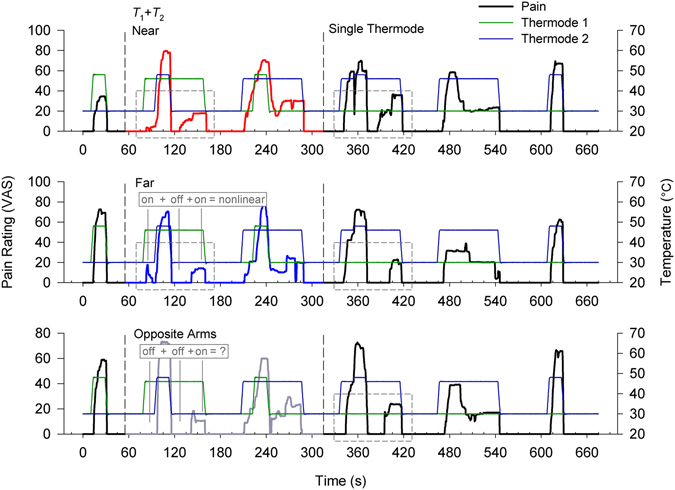Figure 5.

Stimulus and pain ratings from a representative subject exhibiting nonlinear pain for single complex stimuli and for dual stimuli configurations (near, far, and opposite arm). Each stimulation sequence consisted of two dual-thermode stimuli (red, blue, gray ratings), and three single thermode stimuli (black ratings). Dual thermode stimuli were delivered at three different distances from one another: near or far on the same arm or on opposite arms, and the order of these was randomized across subjects. The disproportionate diminution of perceived pain following a small offset shows that this subject rates all dual and single complex stimuli nonlinearly, in contrast to a linear sum of the simple stimuli. A more stringent but less ambiguous on-off-on criterion for nonlinear dynamics is also satisfied in many of these instances (gray boxes, one example and one counter example explicitly labeled): despite invariance of stimulus intensity there is pain before T 2 stimulation, no pain immediately after T 2 stimulation, and then pain comes back before the T 1 stimulus ends. Thermode roles switch between the first and second dual thermode stimulus epochs.
